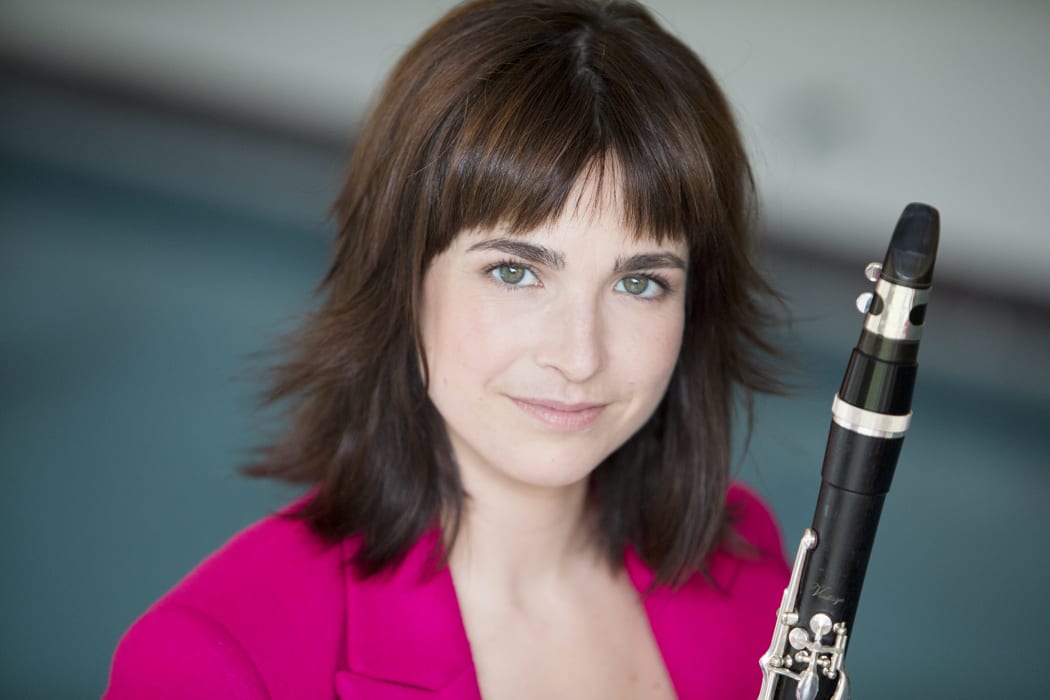Annelien Van Wauwe joins the Auckland Philharmonia and conductor Jun Märkl to play Mozart's Clarinet Concerto as Mozart himself was likely to hear it - performed on the basset clarinet. Also on the programme, works by Debussy and Japanese composer Toshio Hosokawa.

Annelien Van Wauwe Photo: Joëlle Van Autreve
MOZART: Clarinet Concerto in A K622
Mozart’s Clarinet Concerto was one of the very last works Mozart completed before his death in December 1791; and it’s also one of his most famous.
Yet, most of us know it in its revised version for the standard Clarinet. This was an early 19th-century transcription that placed the concerto at the very heart of clarinet repertoire, but arguably loses the emotional colour allowed by the larger basset clarinet with its deeper range and veiled tone. That original manuscript written for Anton Stadler is lost to history - what we hear in this performance is a 20th-century reconstruction of how we think Mozart would have utilised the lower register of the Basset Clarinet.
The soloist is rising Belgian star Annelien Van Wauwe. Considered one of the most influential musicians of her generation, Van Wauwe is a sought-after soloist and recording artist on all forms of the clarinet.
SAARIAHO: Blühend, from Duft
An encore from Annelien Van Wauwe celebrating the recently departed Kaija Saariaho.
Toshio HOSOKAWA: Circulating Ocean
Toshio Hosokawa was born in Hiroshima in 1955 and studied music in Tokyo but has spent much of his adult life studying and working in Germany. He returned to Japan in the late 1990s and his compositions then took on a renewed engagement with traditional Japanese music.
In Circulating Ocean from 2005, we hear something of that aesthetic. It was commissioned for the Salzburg Festival and premiered by the Vienna Philharmonia. The orchestra must emulate the breathing in and out of the sho – a Japanese instrument that is reminiscent of the mouth organ. Circulating Ocean reflects the tides, eddies, and perpetual motion of the sea. Its nine movements are to be played continuously, and Hosokawa writes that, “The ocean is for me the birthplace of life, a being possessed of infinite depth and expanse. The waves rolling in and withdrawing can be felt as ‘the voice from eternity".
DEBUSSY: La Mer
This three-movement work from 1905 has long defied genre and musicological classification. Not quite programmatic music but also not abstract musical impressionism, Debussy himself said, “Who can know the secret of musical composition?”
The work took some eighteen months to compose and went through various schemes in the planning stages. Each movement has its own evocative title: “From Dawn to Noon on the Sea”, “Play of the Waves”, and “Dialogue of the Wind and the Sea”. But Debussy resisted the temptation to fix form to overt storytelling, preferring to call the work “Symphonic Sketches”.
And he claimed that he was often more inspired by paintings of the sea than the sea itself. Indeed, the first edition of La Mer featured Hokusai’s The Great Wave off Kanagawa as cover art. We can also hear a musical parallel with an artist like JMW Turner and his interplay of colour, light and texture.
Recorded by RNZ Concert in Auckland Town Hall, 28 September 2024
Producer: Tim Dodd
Engineer: Adrian Hollay

